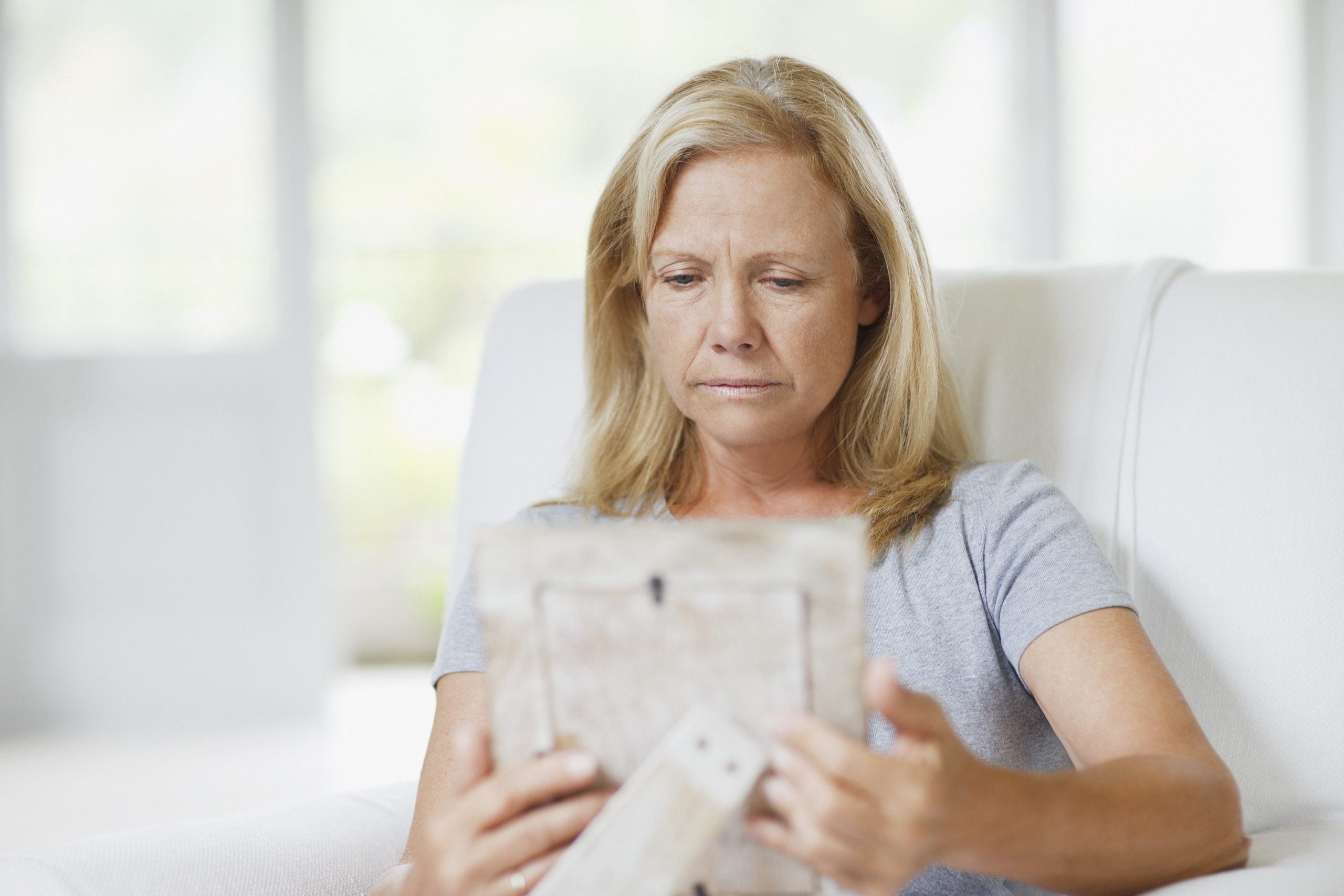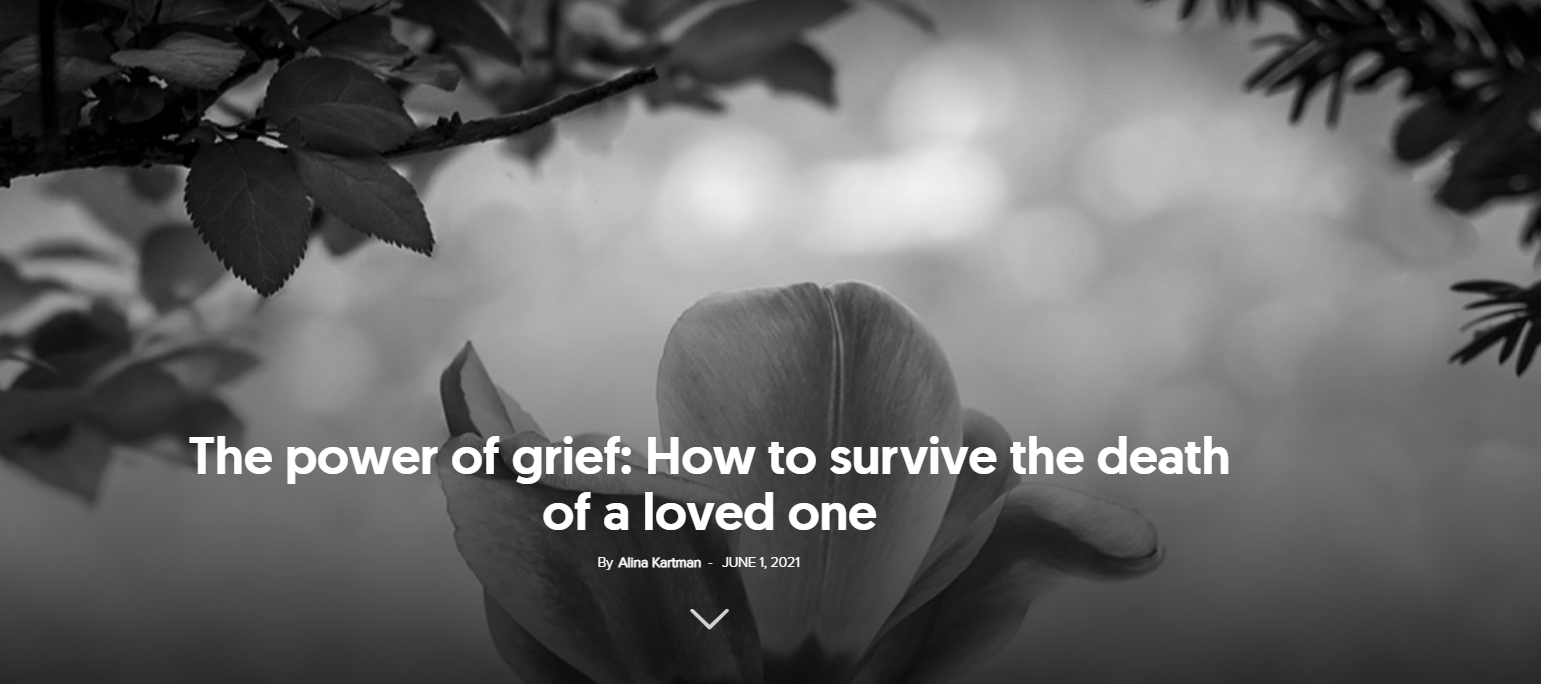Loss begets pain, but pain is not one-size-fits-all, so there are no recovery methods that work in all situations. We do have at hand, however, explanatory models of pain, studies that dismantle myths about grief and, above all, “a psychological immune system” that helps us recover from painful experiences.
“It will pass.” Three words that are pretty worn-out, considering how many times they’ve been used. We’ve said them to others and others have said them to us in moments of pain, and there is a fairly high probability that they did not have the expected effect in any of the situations. Not because they don’t contain a dose of truth. It is because the one who says these words returns to their life as they know it, but for the one who suffers, life has a completely different outlook, and the road to healing is marked by the unknown and by waves of overwhelming feelings that sometimes seem to sweep away everything that was left standing.
The first morning in a row of several tens of thousands in which there is emptiness and silence on the other side of the bed, the first evening when you open the door and there is no one to answer your greeting. The day after the dearest people packed their most valuable things and left for the other side of the world. The tenth night when you can’t sleep, wondering how a love story that promised to stay strong “until death do us part” has come to an end. The thirtieth day after the doctor said the pregnancy had stopped progressing, the forty-fifth month since the maternity dress sits unused on the last shelf of the closet.
The strong feelings of grief we experience when we lose something or someone we love are so normal that they are not typically given a diagnosis, as is the case, for example, with depression, notes psychologists Matthew Whalley and Hardeep Kaur. There is no “right” way to grieve loss and no quick fixes to end the pain, the two psychologists say, but we can gain support on this difficult journey by learning more about loss, the factors that can increase or decrease the intensity of the suffering, and the resources that we can use in this process.
What we should know about loss and grief
Although we commonly think of loss as the death of a loved one, many other types of loss can cause pain: breaking up a relationship, losing a job, getting older, receiving a grim diagnosis, losing a home, being separated from friends and family after moving away from home, and so on. In general, the losses that cause us pain are those that result in significant changes in circumstances or roles in life.
Loss can cause pain even when it is a result of our choices, and many of the mechanisms for coping with the change produced by the death of a loved one are applicable to other types of loss as well.
Most people who turn to a specialist for support in adjusting to loss know very little about grief itself, and lack of information and misconceptions about suffering only make the suffering worse, says grief specialist Marilyn Mendoza.
The pressure that the bereaved person’s entourage or the person concerned exerts on themselves to “get over” the loss can have the opposite effect: those who force themselves through all the stages before being ready can prolong their grief, compared to people who allow themselves time to deal with each wave of feelings generated by the loss, says psychologist Adrian Fletcher.
It’s not about letting ourselves be engulfed by our loss, explains trauma specialist Jamie Cannon, but about learning to feel at peace and at ease when it comes to expressing emotions, even if they’re negative. When we realise that it is normal to feel sadness, guilt or anger, we create a suitable framework for their intensity to diminish.
Bereaved people cry not only for a past that will never return, but also for the dreams and desires that will remain unfulfilled, Kristin Meekhof points out. A father who will never get to walk his daughter down the aisle, a grandson who will never know his grandmother, a wife who will never know the experience of motherhood—all these broken dreams produce suffering, the same as memories.
Each person experiences loss differently. What is more, the pain triggers are unique to each person (a song, a piece of clothing, a gesture, a place), and the period of mourning differs from individual to individual. When we express our bewilderment that pain persists beyond the usual time limits, all we do is communicate to the grieving person that there is something wrong with them, at a time when they need patience and kindness more than ever.
How valid is the five-stages-of-grief model?
One of the best-known patterns of pain is the one described by psychiatrist Elisabeth Kübler-Ross. In 1965, Kübler-Ross was an assistant professor of psychiatry at Billings Hospital, affiliated with the University of Chicago, and was working on the psychological treatment of terminally ill patients. She developed a grief pattern that she first introduced in her book, On Death and Dying, describing its five stages: denial, anger, bargaining, depression, and acceptance. Initially, these stages were about the process of dying and applied to people suffering from terminal illnesses, but the psychiatrist later expanded her model, extrapolating it to grief as well.
Despite the popularity of the Kübler-Ross model, there have been very few attempts to empirically test it. A 2007 study led by Paul Maciejewski was considered the first empirical confirmation of this pattern. Conducted over a period of two years, on a group of 233 people who lost a family member from natural causes, the study concluded that the stages described by Kübler-Ross exist and that, in each stage, a certain emotional state reaches a maximum level and then decreases, except for acceptance, which has an upward trend over time.
However, the results of the study have been questioned by some researchers for several reasons, including the way the authors analysed the results obtained and the exclusion from the very beginning of participants who did not fit the Kübler-Ross model (those who were suffering from persistent complex bereavement disorder). Nevertheless, the stage theory of grief remains appealing to clinicians and the general public and is still taught in medical schools, although it has no empirical support, say George Bonanno and Kathrin Boerner, authors of the first study that empirically tested the Kübler-Ross model.
The study led by Maciejewski was replicated in 2010, but its authors concluded that there is little data to support the five-stage model and that sensemaking is a much more important element of grief—what helps people to get over the pain more easily is their ability to understand what they are going through.
One of the reasons why the five-stages-of-grief theory continues to have strong support is our need to have a simple scheme of things that tells us what to expect, says psychology professor George Bonanno. In reality, there is a great deal of variability in the reactions of individuals who experience loss, serious illness, or trauma, and also great differences in the time it takes them to recover.
Resilience, a pattern of grief reaction
Through years of research, Bonanno has identified three patterns of grief reaction “to nearly every major life stressor.”
The first pattern is that of prolonged or chronic grief, found in about one in every ten bereaved people. People in this category struggle with pain for years, and their condition does not seem to improve over time, often even getting worse.
Another pattern is that of recovery. People go through intense suffering, usually lasting several months to a year, and then begin to recover and resume their old behaviours. Even if they’ve recovered from the loss, in the conversations they have about grief, they may say, even years later, that grief is something you never really get over. The number of people who recover within a maximum of one year after the loss is also relatively small (approximately 20% of the bereaved).
The most numerous are the resilient individuals (between one-third and two-thirds of those who lose a loved one), who experience the suffering in an intense way, just like the others, but for whom the pain subsides after a relatively short period (from days to weeks). The resilience pattern of grief reaction is not associated with indifference or lack of regret, but rather describes the ability of individuals to accept pain, to evade it in order to cope with the demands of life, and to adjust their lives to the new reality.
The three patterns of grief reaction are found not only in the bereaved but also in those facing problems such as divorce or job loss, as well as in those who go through potentially traumatic life events such as an epidemic or a terrorist attack, Bonanno points out.
Facing adverse circumstances is difficult because they bring us pain, but we should not underestimate our ability to handle them, says the psychology professor, arguing that “most of us have a psychological immune system that allows us to be naturally resilient and recover pretty quickly from these experiences.”
Asked whether we are born resilient or learn to become so, Bonanno says that resilience is a complex trait, relatively little analysed by researchers. The professor believes that we are born with the necessary tools to build our resilience, but it is predicted by a multitude of factors. “Personality traits such as optimism or hardiness predict resilience, but that’s only a little piece of it, like a slice of the pie,” says the researcher: “You can have the healthiest personality in the world, but if everything else in your life is negative—you live in poverty or lack access to adequate education—you are less likely to be resilient.”
Economic and social resources, health, the ability to see the good part of negative situations, self-confidence, and long-term stress are factors that intervene in building resilience. There are at least two types of resilience: minimal-impact resilience occurs when the individual suffers a loss and bounces back from the blow, while emergent resilience occurs when adverse events are repeated or remain unresolved for a long period of time, as might be the case with a cancer diagnosis.
A study published in 2009, which Bonanno also co-authored, showed that optimism and better early post-operative treatment outcomes were good predictors of resilience in women diagnosed with breast cancer.
About pain, meaning and growth
Closure from grieving a loved one is a myth, says psychologist Pauline Boss, who coined the term “ambiguous loss” in the 1970s as a way to describe the suffering caused by the unexpected loss of someone close to us, in circumstances that did not allow us to say goodbye.
We won’t be able to erase the loss we’ve suffered, or get over it, but we can face it, pick ourselves up after we’ve been knocked down and become stronger, says Boss. The best way to give meaning to our loss is to “cope through some action”—repairing an injustice, working for a cause, or righting a wrong, concludes the psychologist. When Boss’s younger brother died of polio, her family went door-to-door trying to raise money for the nonprofit March of Dimes, which in turn was raising money to fund research into a vaccine.
Finding meaning in the midst of suffering is essential, points out psychologist Isaac Tourgeman, emphasising that it is not necessarily about finding the meaning of the tragic event, but the meaning of the life that continues after it. Although some prefer to seek meaning and solace elsewhere, for others, faith fills the void left and offers hope for a future reunion, so that they can say a painful “see you again” to their loved ones instead.
Getting support from family or friends (including for daily activities that become overwhelming) is important, and sometimes even a support group or individual therapy may be needed. Moreover, re-prioritising and focusing on urgent or unavoidable tasks can eliminate unnecessary stress and conserve the sufferer’s depleted energy. When we suffer an irreplaceable loss, we feel the need to be treated gently by others, but we must be gentle with ourselves as well, notes psychologist Adrian Fletcher.
Even if the pain doesn’t go away over time or if it comes back in force at certain moments, we can continue to grow our lives around the pain, says Lois Tonkin, who specialises in grief counselling. The concern to articulate a grief pattern that served those who did not seem to fit existing patterns arose after some patients complained to Tonkin that their suffering did not diminish over time, in the way the counsellor thought it should.
At a workshop, a woman described a model of grief which fitted her experience. She shared how her life and the pain of losing a child were transformed, and Tonkin said she found more meaning in this model than others she used in her counselling sessions. At first, the pain was so great, the woman said, that it consumed all her resources, 24/7. She drew a picture with a circle to depict her life, and shading to represent her overwhelming grief.
The woman imagined that, in time, the pain would subside and become much more manageable—that shadowed circle would shrink and become encapsulated by the other circle, which represented her life after adjusting to the loss. The reality was different. “The grief stayed just as big, but her life grew around it.” On various special occasions (such as anniversaries) or other moments which reminded her of her child, the pain was just as intense as it ever was. However, “increasingly, she was able to experience life in the larger circle.”
There are cases where grief is debilitating and people cannot recover without professional help, but the merit of Tonkin’s theory is that it emphasises that pain is legitimate, we can integrate it into our lives, and we can grow by embracing it, learning its lessons. In the end, pain is “an experience with no road map,” but also “the corollary to love.” Genuine love does not disappear, it only transforms—and if love lasts so long, why would we think pain can’t have a corresponding duration?
Carmen Lăiu is an editor at Signs of the Times Romania and ST Network.




















